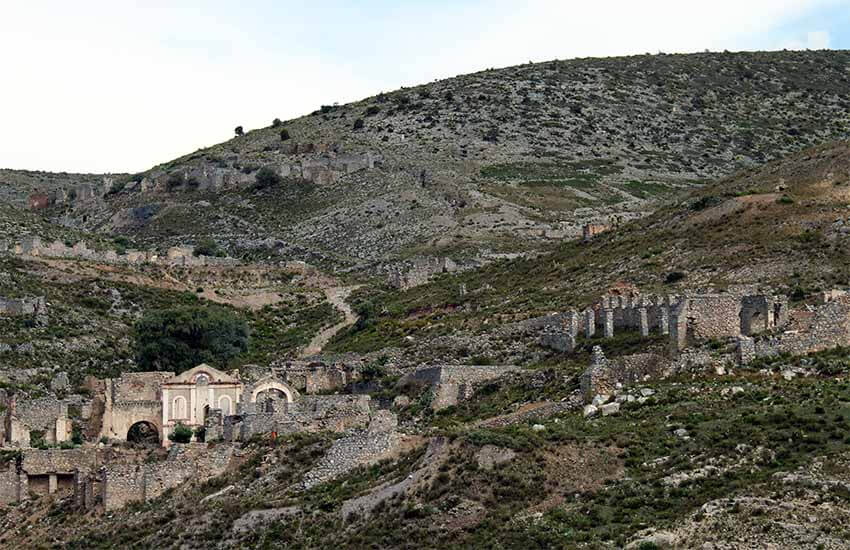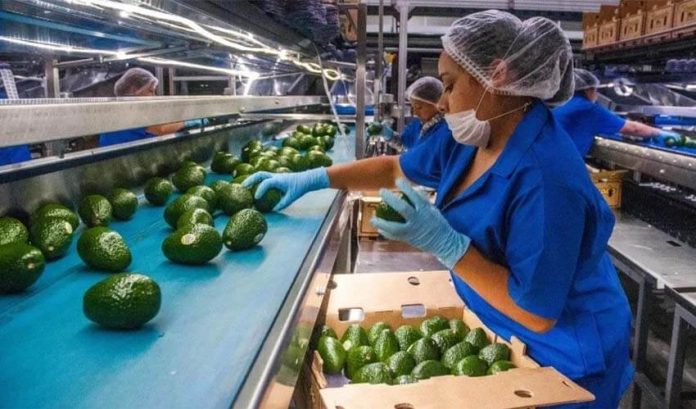When journalist Andy Robinson visits Lake Pátzcuaro in Michoacán, he marvels at the natural scenery but despairs over a man-made feature: the increasing presence of avocado farms resulting from a skyrocketing demand for guacamole in the United States.
“The avocado orchards just spread like wildfire across a very, very beautiful, environmentally important landscape around Lake Pátzcuaro and beyond,” Robinson said in a Zoom interview. “It all happened so quickly. It creates so much money so quickly. As in previous periods of Latin American history, it’s often extremely damaging.”
“It seemed to me [that the avocado is] driving yet another instance of the sort of boom-bust Latin American commodity economy that has been the case for 500 years literally since the Spaniard Hernan Cortés landed in Veracruz,” Robinson reflected. “That’s been the kind of model for Latin American economic growth.”
As a roving Latin American correspondent for the Spanish newspaper La Vanguardia, Robinson is noticing 21st-century variations on the conquistadors’ theme.
In addition to more traditional commodities, such as the gold that tempted Cortés, there are newer boom markets, including the avocados with which Mexico tempted American viewers during the recent Super Bowl. Robinson details his findings in a new book – Gold, Oil, and Avocados: A Recent History of Latin America in Sixteen Commodities, published by Melville House Books.

Avocados are currently the decidedly hot commodity, due to heightened attention from the United States, although Mexico’s northern neighbor’s abrupt ban on its avocados — after a U.S. inspection official was threatened in Uruapan — suddenly threatens that status.
“[The] avocado as being the superfood, a superfood that has all these medical properties, it’s a food that doesn’t cause heart failure, it actually helps combat depression – there may be quite a lot of truth to it,” he said. “It becomes hyped. Then the Super Bowl advertising, the use of American football stars … it’s turned into an absolutely essential dish for watching the Super Bowl.”
Yet, Robinson noted, this popularity comes at a cost.
“It’s turned into one of the key businesses for organized crime,” he said, citing “the bodies hanging from the bridge in Uruapan, the capital of the avocado.”
“Meanwhile, it’s a serious problem, the overconsumption of water by the avocado farms. They consume a lot of water. I spoke to people working on it, like scientists … recognizing water was scarce despite the fact that there are huge lakes. The lakes are becoming polluted.”
Robinson’s book is also a meditation on the rise and fall of the “pink tide” of progressive Latin American leaders in the first decade of this century – and an homage to a 1971 classic book on the region’s economic history: Open Veins of Latin America by the late Uruguayan author Eduardo Galeano.
The British-born Robinson first read Galeano’s book at university, where he studied economics and sociology. “I remember reading it and saying, ‘Wow, it’s so well-written,’” he recalled, “such a damning critique of colonial exploitation — I suppose, imperialist exploitation.”
Galeano’s book “focused a lot on the sort of boom-bust dynamic, a terrible dynamic … for Latin American commodity production,” he explained. “It had a chapter on sugar, a chapter on coffee.”
Similarly, each chapter in Robinson’s book focuses on a specific commodity that he connects to a particular country or countries. Three chapters pertain directly to Mexico: one on avocados in Michoacán, another on silver in San Luis Potosí and a trinational study of oil in Brazil, Venezuela and Mexico.
San Luis Potosí also figured prominently in Galeano’s book, along with Zacatecas — “the two states in the high desert of central Mexico most closely identified with colonial mining,” Robinson writes, adding that in San Luis Potosí today, “the simultaneous defense of the environment, indigenous rights, fair wages, oil-driven growth and mining seemed a tall order.”
In the chapter on oil, Robinson visits President Andrés Manuel López Obrador’s home state of Tabasco and birthplace of Tepetitán. The author interviews residents with long memories of AMLO, including the president’s friend, Luis Guillermo “Luigi” Pérez, a local Morena party power broker.
Robinson also discusses López Obrador’s oil policy with a Villahermosa taquero named René Méndez Arjona, who improbably promises over 100% support for the president should he fulfill his promises for a truly domestic oil supply.

The section’s prose reflects the author’s aim “to write a book on economic history like a novel on pirates or lovers,” with allusions to Graham Greene’s novel The Power and the Glory and to Cortés’ burning of his ships. Robinson also writes of “the irrefutable logic of the taquero” (taco seller) in describing a man-on-the-street perspective on AMLO’s oil policy.
“That chapter in the book tries to sort of highlight what seems to be [what] all of the analysts, rating agencies, some of the economic advisers of AMLO, [are asking]: why build a new refinery in Tabasco if you can refine in Texas, in Houston?
“Why not use the money for social programs, things like that? [AMLO] understands Mexican energy sovereignty – that a lot of people, like working people, feel strongly that Mexico should produce its own gasoline,” Robinson said.
Other chapters mention Mexico as well. Although mainly focused on Peru, the chapter on potatoes includes a visit to a Frito-Lay supplier in Nuevo León and AMLO’s concerns over the obesity crisis in Mexico. The chapter on lithium in Bolivia notes that after a controversy over this commodity toppled Evo Morales, the ex-president received a welcome from President López Obrador.
Much of the book makes for grim reading, especially the chapter on iron and Brazil, which addresses such topics as the Carajás mine – “the biggest open-cast iron mine in the world,” Robinson writes, describing it as “[an] enormous wound in the tropical forest” – and the 2016 Samarco dam collapse, which devastated the Doce River in southeastern Brazil.
The book also argues that commodities sought for the new green economy are adversely impacting local environments – including in Chile, the world leader in the production of copper, which Robinson said is even more vital for electric cars than for gasoline cars.
“Chile crystallizes that problem because the copper industry in Chile, copper mining in Chile, is a huge environmental problem,” he said. “I think that’s something that will be expected throughout the region, and Africa as well. There’s going to be a huge temptation to mine … there’s going to be demand for a lot of metals essential for electric cars and renewable energy products.”
He predicted history repeating itself: “Prices will go up, there will be another supply cycle of commodity prices — metals and minerals; it will create an irresistible temptation to go back to that dependence on the exportation of metals without industry.”
But despite the grim topics, Robinson hopes that his book doesn’t appear too “pessimistic.”
“Some people say it is. A lot of people tell me it’s kind of depressing. I try to include, make sure, that the people who are fighting against the big mining companies or big agribusiness companies were the protagonists of the story.”
He cited possible heroes of the future:
“I think Latin America has a lot of potential for being a leader of the fight against mining [and] commodity food production and a leader in showing another model is possible,” Robinson said, noting that “small farmers … continue to live in communities that are functional and protect the environment. The Amazon is one of them … even southern Mexico, the campesino (farmer) economy.”

Rich Tenorio is a frequent contributor to Mexico News Daily.
